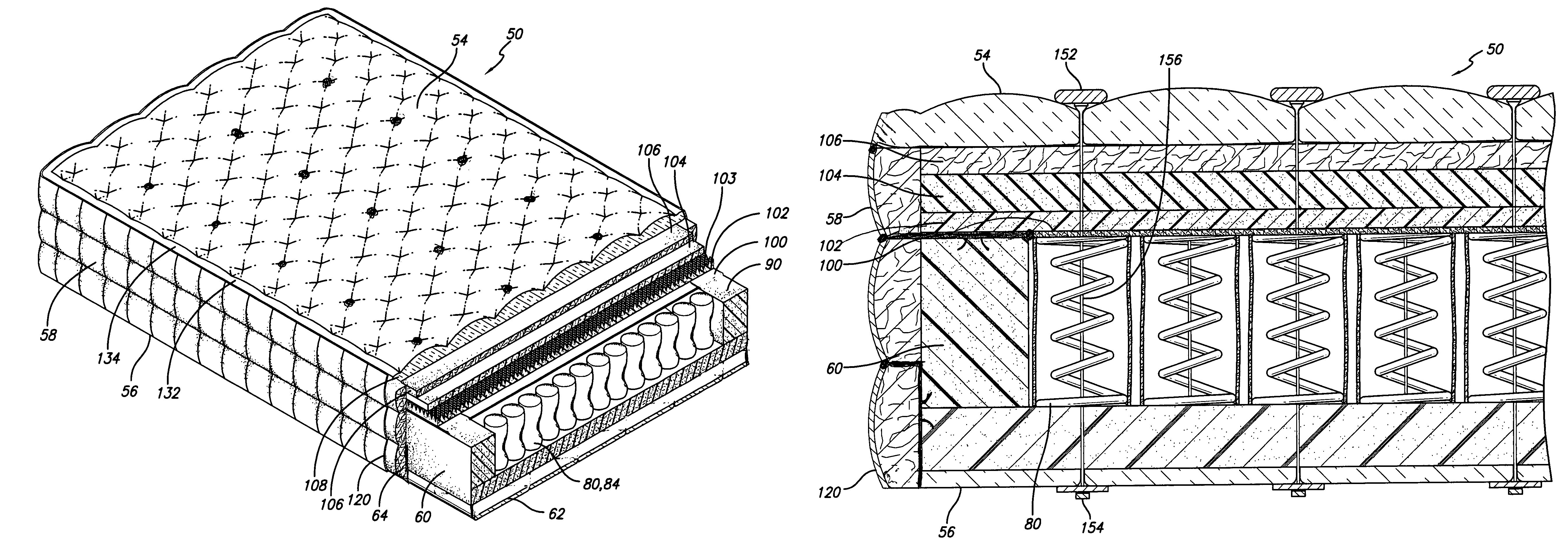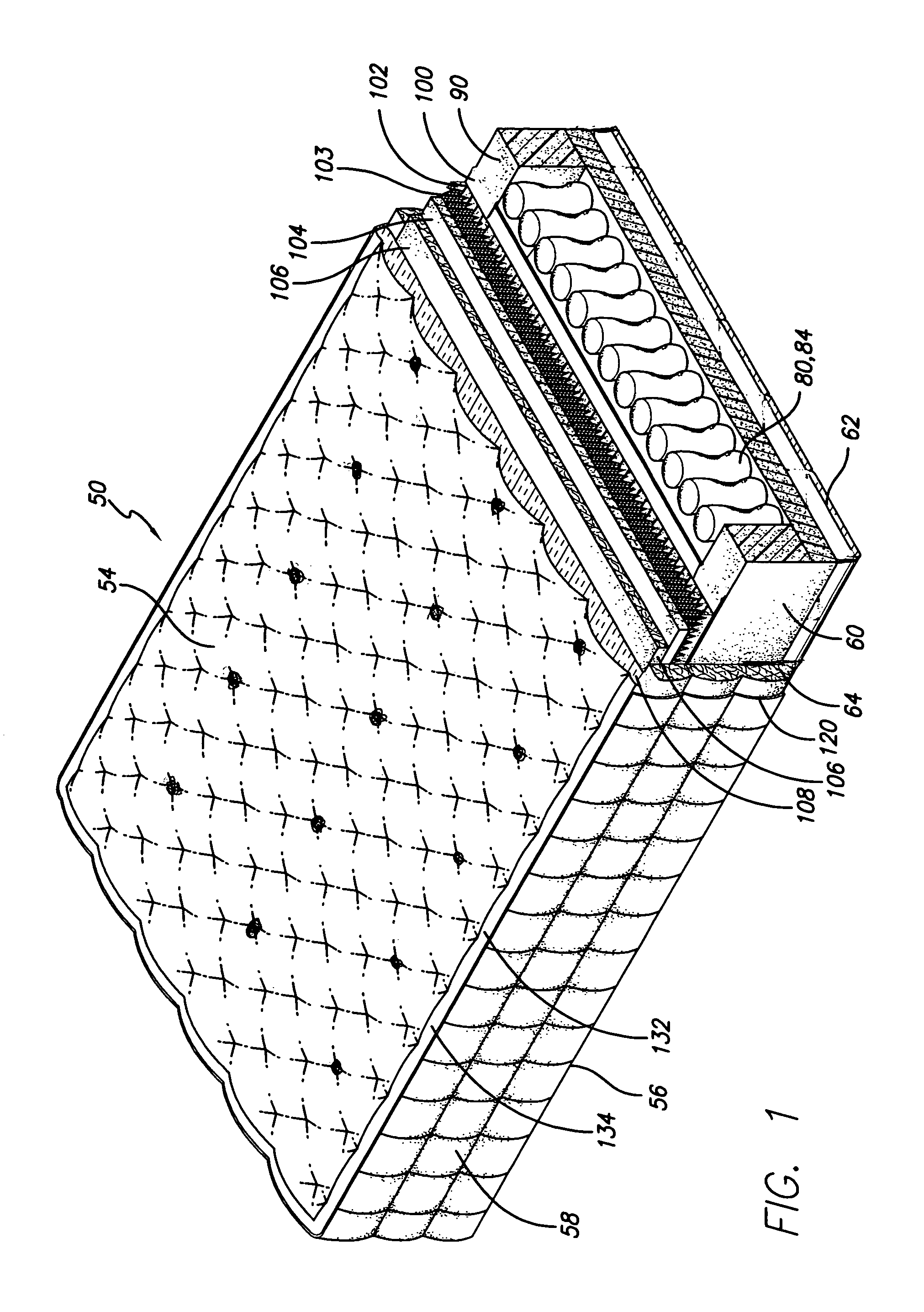Mattress design
a mattress and construction technology, applied in the field of mattresses, can solve the problems of inability to meet the needs of sleepers, the construction of mattresses working against themselves, and the surface of conventional mattresses might sag, and the sleeper lying on the mattress might inadvertently roll off the mattress, so as to reduce the effect of roll-off, and prolong the life of the mattress
- Summary
- Abstract
- Description
- Claims
- Application Information
AI Technical Summary
Benefits of technology
Problems solved by technology
Method used
Image
Examples
Embodiment Construction
[0028]Referring now to the drawings, which are provided by way of example and not limitation, the present invention is embodied in a novel mattress design. The various components of the present mattress design are selected and assembled in a manner intended to provide a mattress of superior quality and which minimizes a drum effect found in conventional mattresses.
[0029]With reference to FIG. 1, there is shown a mattress 50 having an upper side or sleeping surface 54 and a lower or bottom side surface 56. The mattress further includes a perimeter consisting of sidewalls 58 extending vertically from the bottom surface 56 to thereby define a generally rectangular three dimensional mattress structure.
[0030]In one aspect, the mattress 50 includes a foam encasement 60 which forms an understructure of the bottom 56 and sidewalls 58 of the generally three-dimensional rectangular shape of the mattress50. The foam encasement 60 can be made from various conventional materials such as polyuret...
PUM
 Login to View More
Login to View More Abstract
Description
Claims
Application Information
 Login to View More
Login to View More - R&D
- Intellectual Property
- Life Sciences
- Materials
- Tech Scout
- Unparalleled Data Quality
- Higher Quality Content
- 60% Fewer Hallucinations
Browse by: Latest US Patents, China's latest patents, Technical Efficacy Thesaurus, Application Domain, Technology Topic, Popular Technical Reports.
© 2025 PatSnap. All rights reserved.Legal|Privacy policy|Modern Slavery Act Transparency Statement|Sitemap|About US| Contact US: help@patsnap.com



